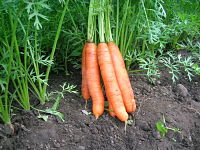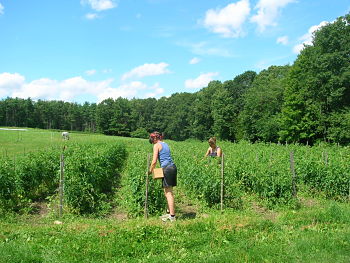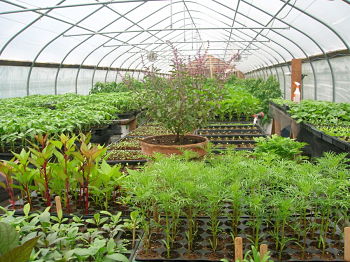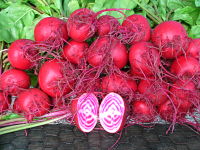The Weblog

This page contains news, event information, and other items added by the market managers.
Refilling accounts and other thoughts
Greetings on a beautiful summer day,
It’s not time to order for this week, but I’ve been meaning to write for a long time about why the online market works the way it does this year. So for the curious, read on.
But first, the question has started to come up about what to do if the money in your account is getting low and you want to continue to be an active member. The harvest has been going on now for 9 weeks; we have another 10 or 11 to go. We’re less than half way!
If and when you want to add to your account you can do so in $50 increments. If you’ve been ordering an average of $20 or so dollars a week and foresee continuing at that level you might want to add another $100 dollars if there’s still a couple of months to go and your account is almost empty. Or just add $50 dollars at a time when needed. As with your initial payments, money that you add now isn’t refunded or rolled over to another year so you don’t want to overdo it.
It may make sense to start a pay as you go approach when we get to the last few weeks. We’ll see how it goes.
To add to your account please make out a check to Tim Winship and send to PO Box 143 Temple NH 03084
As for how the market works, I imagine that some people wonder why they see only a few bunches of arugula, seven pounds of cousa squash, 3 heads of romaine and other small amounts on any given week. When deciding how much to grow I used the records from 2015 to tell me how many heads of lettuce were ordered that season, or pounds of peas, or bunches of arugula, etc. These were totals for the season, not week by week. So for example, if members ordered 200 pints of Sakura cherry tomatoes in 2015 I had to figure out how many plants would provide that amount (and more) over the course of their harvest period. While this should satisfy overall demand the amount available each week would inevitably vary. Some weeks I could get 25 pints, other only 15. So sometimes the Sakuras have sold out and not everyone who wanted some could get them. This situation applies to a lot of the crops. There may be enough for the season, but some weeks a crop will come up short. I’m sure it’s frustrating sometimes to go online to order and find that one or more items that you wanted are sold out. Unfortunately, there’s no way around that without growing way too much.
I know that a lot of people like our CSA because they can choose what and how much they want (if it’s available!) and not just be given a set amount of produce each week. As one member said, she likes choosing her vegetables, instead of her vegetables choosing her. The challenge for me is to figure out how much to grow when I don’t know how much people are going to order. If this were a typical CSA I would have a better sense about how much to grow because the amounts given out would be a relatively known quantity. To avoid too much waste I have to try to grow only so much. The result is that for members there can a be shortage of certain items at times and for us a certain amount of produce gets composted or tilled under. It’s the usual trick of trying to find the right balance. There’s inevitably a lot of squash in the compost pile since it has to get picked at least every other day to keep it producing. Things were a little easier when we we’re growing for our big farmer’s market, but that’s not happening anymore so here we are.
There are other reasons that we might not have much of something. Nature rules on the farm and weather, insects, and disease can alter the yield of a crop in a short amount of time. Or else the farmer forgets to plant lettuce one week and makes other errors that create a problem.
The last thing I want to mention is about pricing. Many of you have seen an adjustment on your invoice which is then carried over to your account. I had a fantasy that we could avoid that this season, but that was just magical thinking. Ideally, all the produce would be priced by the each and not by the pound, but the plants do what they do. Some tomatoes weigh a pound so no adjustment is needed, but most of the time after weighing various combinations of sizes we give up and have to adjust accordingly. Because I don’t feel that we can debit your account without permission we err on the side of choosing a tomato or onion that’s underweight and credit your account. The squash is almost always over weight, but it’s relatively abundant so we don’t worry about that. The garlic is a dollar each based on their size being equivalent to between $9-10 dollars a pound.
I don’t know if this answers any questions people might have about the workings of the CSA, but I wanted to pass the information along. If you have any questions or comments let me know.
Thanks,
Tim





